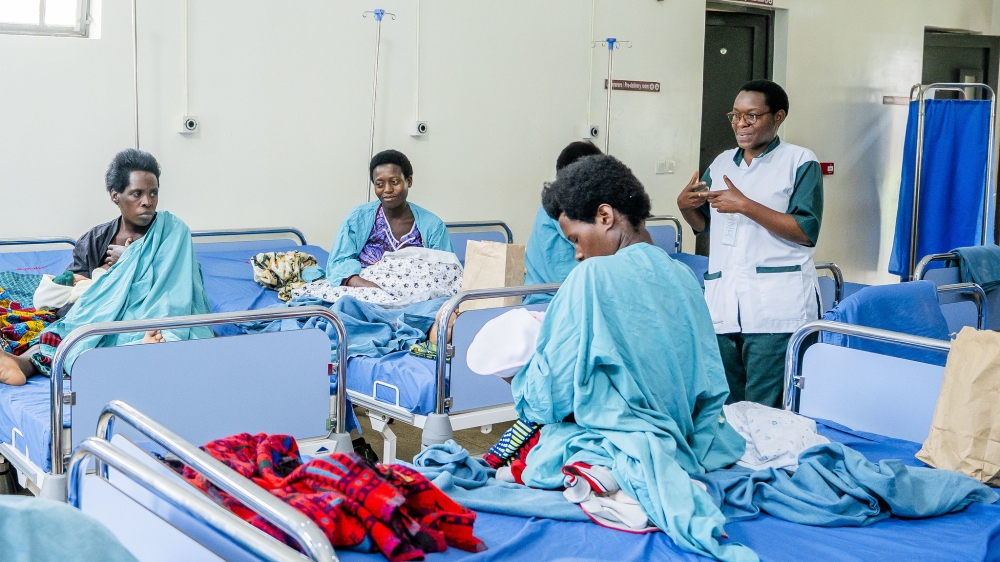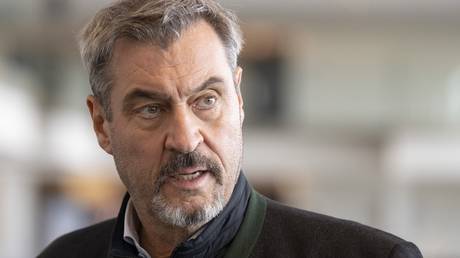Burera District, tucked into the rugged hills of Rwanda’s Northern Province, is a place where every journey matters, especially the journey to bring new life into the world.
For mothers here, giving birth is not just a personal milestone; it is a test of endurance, the strength of community support, and the reach of Rwanda’s health system.
ALSO READ: How Rwanda enhances mother child health through community engagement
In the village of Butaro, 40-year-old Chantal Nyiramahoro knows this journey all too well. When her labour began, she faced the daunting reality of distance and terrain.
“I went into labour at home,” she recalls, “but the health centre was far, and the road was difficult. I feared for my life and my baby’s. Without the support of the hospital, I might not have survived.”
For many women in Burera, these fears are real. The district’s hilly landscape can turn a simple trip to the health centre into a precarious journey. Rain can wash out roads, and steep inclines make travel almost impossible for women in labour.
Yet, in recent years, government programmes, community health workers, and hospital interventions have begun transforming these journeys from perilous to manageable.
ALSO READ: How Rwandan ‘virtual hospital’ is changing maternal, newborn healthcare
The journey to safety
Elizabeth Nyirandikuryayo, 35, remembers the anxiety of her labour. She had initially planned to deliver at the local health centre, but complications arose.
“I arrived in the evening, in pain, and the staff immediately began preparing me for safe delivery,” she says. “I did not have to face the process alone. They explained everything and supported me every step of the way.”
Butaro Hospital, serving as a lifeline for the district, is central to these efforts. The facility, overseen by Director General, Dr. Eulade Rugengamanzi, covers 19 health centres in Burera and neighbouring areas.
“Our goal is to ensure every mother delivers safely,” he explains. “When complications arise, we have a referral system that brings patients to Butaro for advanced care.”
Community Health Workers (CHWs) are critical links in this system. They identify pregnant women early, educate them about antenatal care, and monitor their progress.
“The CHWs are the bridge between the community and the hospital,” says Dr. Rugengamanzi. “They alert us when a mother needs urgent attention, and we coordinate transportation and care.”
ALSO READ: Community health workers: Facilitating the growth of Rwanda’s health sector
Midwives at the frontline
On the ward, Julienne Niyigena, head of the Gynecology and Obstetrics Department, guides mothers through every stage of labour. “In this region, geography is a challenge,” she says.
“Mothers sometimes arrive late due to the terrain, which can lead to complications. Our role is to ensure they are supported physically and psychologically throughout childbirth.”
Pain management goes beyond medication. Niyigena describes techniques that include massage, positioning, and guided breathing to help mothers cope.
“We allow the mother to choose what works best for her, whether walking, sitting, or using music to ease labour,” she explains.
Each method is part of a larger effort to provide personalised care while ensuring the safety of both mother and child.
Postpartum care is equally thorough. The hospital monitors mothers for complications, supports breastfeeding, and educates families about newborn care.
Expert mothers, trained at the hospital, assist new parents with breastfeeding challenges and kangaroo care for premature babies. Paediatrician Louis Mujyuwishi notes that these interventions significantly reduce neonatal risks.
“We handle premature births, birth asphyxia, and respiratory complications,” he says. “With proper follow-up, most babies thrive.”
Breastfeeding lessons in recovery
One of the most critical moments in this recovery process is the breastfeeding education provided to new mothers.
While working on my feature story about childbirth at the hospital, I spent some time in the recovery ward and came across a nursing expert talking to a group of new mothers.
She was guiding them through the basics of breastfeeding – how to do it, why it matters, and sharing the many health benefits for both mother and baby. It was one of those moments that felt both eye-opening and deeply important.
Overcoming rural challenges
Despite these measures, the path to safe childbirth in Burera is not without obstacles. Low awareness about antenatal care means many women miss critical check-ups.
Niyigena notes that while first antenatal visits are high, continued attendance remains a challenge. Accessibility is another hurdle
Before recent improvements, travelling from remote villages to Butaro Hospital could take hours, especially during the rainy season when roads are treacherous.
The government’s intervention has been crucial. Three additional ambulances, strategically stationed across the district, have reduced response times.
“Before, it could take several hours to transport a mother in labour,” explains Dr. Rugengamanzi. “Now, most mothers reach the hospital within an hour, dramatically improving outcomes.”
Maternity waiting homes near health centres provide critical support, allowing women close to their due dates to stay near medical care. These homes, combined with CHW guidance, ensure mothers do not face labour alone in remote villages.
The impact of health programmes and collaboration
The results of these interventions are evident. Facility-based deliveries in Burera now cover over 99 per cent of pregnant women, a remarkable achievement for a rural district.
Maternal deaths have decreased significantly, and the incidence of neonatal complications has dropped.
According to Ildephonse Turecyeraho, Data Manager at Butaro Hospital, the maternal mortality rate for the period 2024-2025 was 94.33 per 100,000 live births, while the neonatal mortality rate stood at 16.03 per 1,000 live births.
Notably, in the most recent three months, from July to September 2025, the hospital recorded a maternal mortality rate of zero, alongside a slight decrease in neonatal mortality to 15.71 per 1,000 live births.
These figures reflect positive progress in maternal health outcomes over the past quarter, underscoring the effectiveness of the coordinated care model in Burera.
ALSO READ: How nationwide OB-GYN skills dev’t is reducing maternal deaths
“This progress is a result of collaboration,” says Dr. Rugengamanzi. “We work with community leaders, health centres, and partner organisations to continuously improve maternal care. Daily meetings among our staff help us review cases and refine our approaches.”
The collaboration between the Rwandan government and Partners In Health (PIH), known locally as Inshuti Mu Buzima, has significantly improved maternal health and childbirth safety in Burera District, one of PIH’s key areas of operation in Rwanda.
Through a memorandum of understanding, PIH supports Butaro Hospital in enhancing maternal and child health services.
ALSO READ: Maternal and infant health: How is Rwanda faring
This includes building modern delivery and care facilities, supplying medical equipment, training healthcare workers, and offering social support to vulnerable groups.
Experts from the University of Global Health Equity (UGHE), especially gynecologists and obstetricians, have also played a vital role in advancing care for mothers at the hospital.
ALSO READ: Butaro centre to become full teaching-hospital, says management
Dr. Rugengamanzi, the hospital’s Director General, emphasised their key contributions to improving maternal and neonatal outcomes.
Niyigena emphasises the importance of psychological care during childbirth. “Many mothers experience fear or trauma,” she says. “Our hospital has psychologists who mentor both mothers and staff, ensuring emotional well-being alongside physical care.”
She emphasises that follow-up after discharge is just as vital. Nurses track mothers and babies, provide guidance on nutrition and vaccination, and coordinate with health centres for any necessary interventions.
“We ensure that care continues at home,” he says. “Even in remote areas, mothers are not left alone.”
Voices of mothers
For Nyiramahoro, the hospital’s support meant the difference between life and death. “The doctors and nurses guided me through every stage,” she recalls. “I felt safe, and my baby is healthy. Without them, I do not know what would have happened.”
Nyirandikuryayo echoes this sentiment. “I was scared, but the hospital staff were reassuring. They explained everything, from how to push safely to how to care for my newborn. The CHWs also visited me at home to ensure we were doing well.”
Their stories reflect a broader trend in Rwanda: rural women increasingly have access to skilled care, and the risks of childbirth are being systematically reduced.
A model for rural maternal health
Butaro Hospital’s success is rooted in coordination and community engagement. Health workers, midwives, paediatricians, and CHWs form a network that supports mothers from pregnancy through delivery and beyond.
Government programmes, including ambulance services, maternity waiting homes, and targeted education, reinforce this network.
“The combination of professional care and community involvement is key,” says Dr. Rugengamanzi. “By addressing physical, psychological, and logistical challenges, we can ensure mothers deliver safely and babies survive.”
The hospital also supports mothers with special circumstances. Young mothers, single mothers, and those facing trauma or health complications receive integrated care from social services, psychologists, and clinical teams.
“We ensure every mother, regardless of her situation, has the support she needs,” Niyigena explains.
What the future holds
As Rwanda continues to improve maternal health in rural areas, the experiences of women like Nyiramahoro and Nyirandikuryayo offer both inspiration and evidence that even in the most remote districts, safe childbirth is possible.
The journey may be uphill, literally and figuratively, but the path is clearer, guided by skilled hands and the promise of a healthier future.
Through dedicated health workers, active community engagement, and strong government backing, Burera is steadily becoming a place where mothers can give birth without fear, and children can start life with a strong, healthy foundation.
The hills remain challenging, but the network of support is unwavering, turning difficult journeys into safe arrivals.






